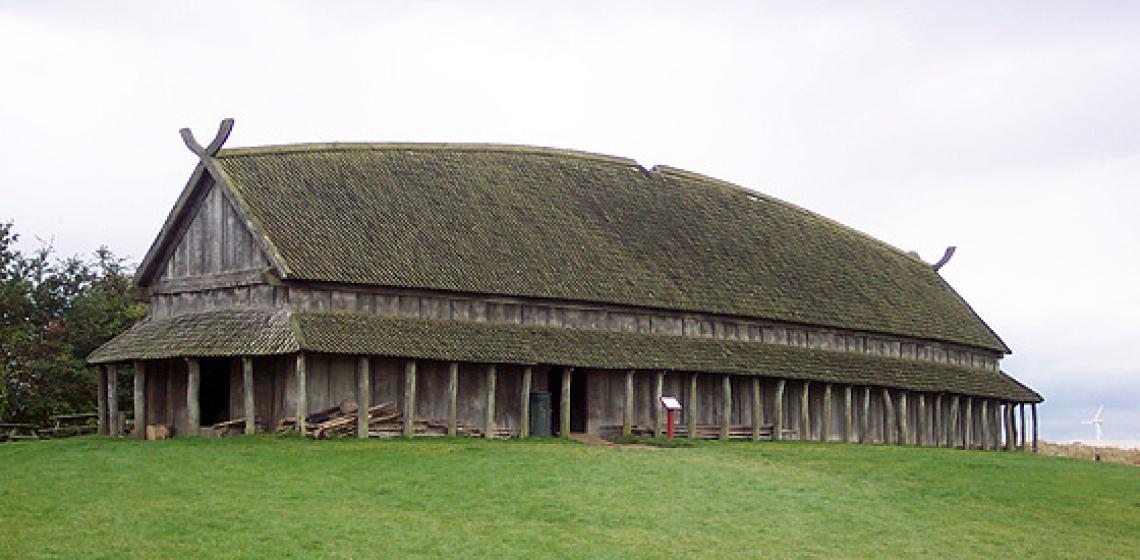
One of the most well known structures of the late Viking Age are the round fortresses, like at Aggersborg, Fyrkat and Trelleborg, both the one in Sweden and the one in Denmark near Slagelse. Unlike its Skånske counterpart, the Slagelse Trelleborg has never been overbuilt. The ruins were still visible at excavation and the earthen rampart is now rebuilt up to its original size: 180 metres in diameter.
Two roads facing the compass points divide the internal part in exactly 4 same size quarters. It is estimated that this ‘military zone’ what it probably was, was built by orders of the king around 980 AD and could host 900 soldiers. Apart from their military function, these fortresses are thought to have been administrative and production centres. Soldiers, craftspeople and nobles working as functionaries for the King lived here with their families.
The ruins were excavated in the 1940s followed by one of the earliest house reconstructions in Denmark in 1948. Obviously it reflected the state of knowledge of that moment, compare it for example with the later reconstruction of a similar house at Fyrkat.
A little bit away from the site, there is a visitor’s centre with some of the original finds and much explanation in film, models and reconstructions – a good start for those going outside where, if one is lucky, living history actors demonstrate crafts or fighting. Much attention goes to children who can do their own tin casting, shooting with bow & arrow or bake bread and play with horses.
